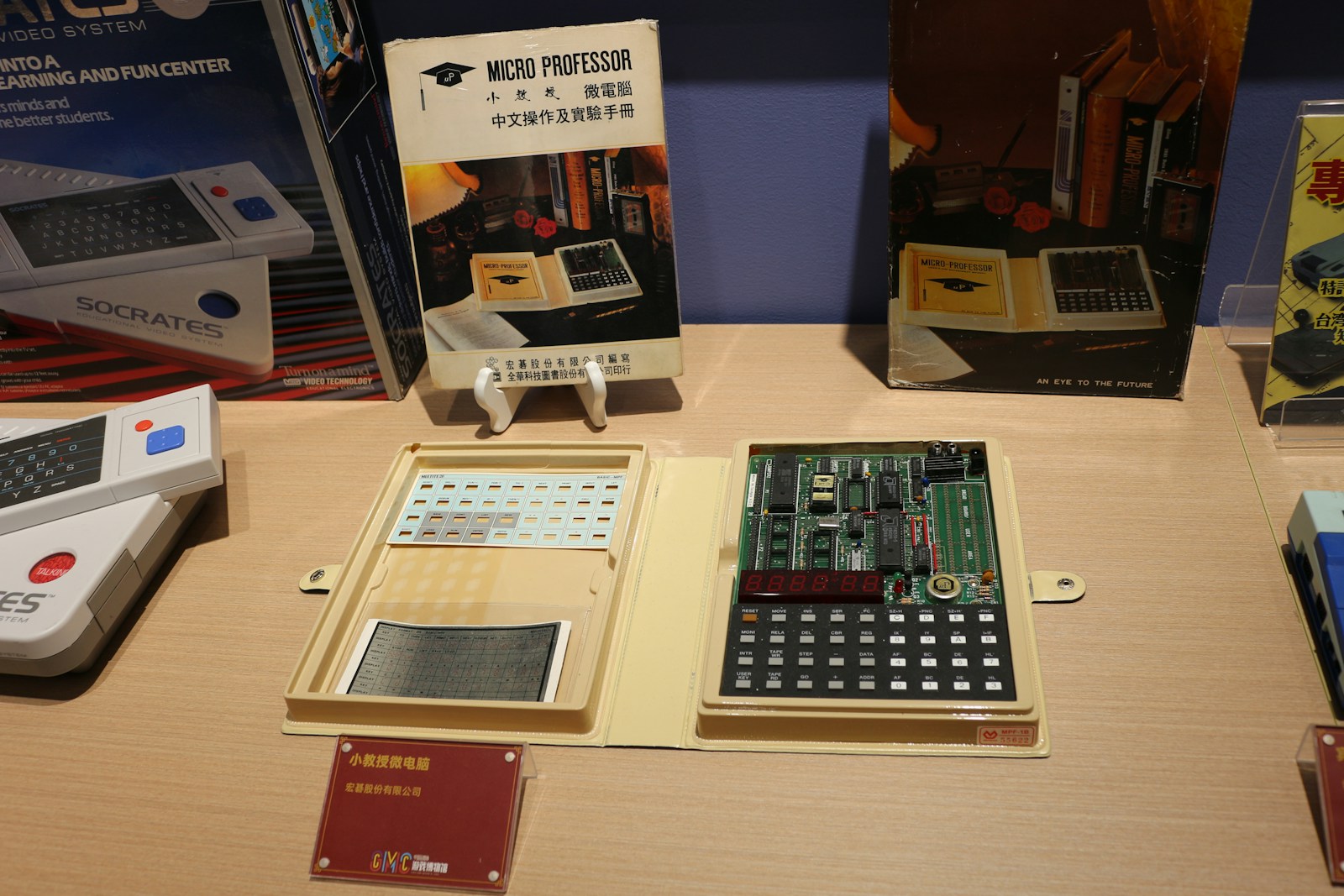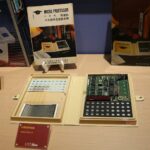Mobile computing has completely transformed the way we work, communicate, and live. Whether you’re video conferencing from a coffee shop, editing documents during a flight, or streaming lectures from your tablet, mobile technology enables a level of flexibility that just wasn’t possible a decade ago.
Phones, tablets, and laptops have evolved into powerful, portable computing devices. Modern smartphones offer processing capabilities once reserved for desktops, while tablets are increasingly used as laptop replacements for students and professionals. Even compact laptops now rival desktops in raw performance, allowing users to code, game, design, and multitask from virtually anywhere.
What’s Driving the Evolution of Mobile Tech?
The mobile landscape is evolving fast. Here are some trends shaping the industry today:
- Chip Innovation: Devices now run on advanced chipsets like Apple’s M-series or Qualcomm’s Snapdragon X Elite, delivering greater energy efficiency and better AI acceleration.
- Battery Advances: Improved lithium-polymer and graphene-enhanced battery technologies allow longer usage between charges.
- Connectivity: With 5G, Wi-Fi 6E, and upcoming Wi-Fi 7, mobile devices offer lightning-fast internet speeds and reduced latency.
- Form Factors: Foldables, 2-in-1 laptops, and ultra-lightweight tablets provide new ways to balance screen real estate with portability.
Yet with so many options and technical advancements, it’s easy to get overwhelmed. That’s why we curated this list of essential mobile computing books and guides—resources that break down the key concepts, offer expert insight, and help you keep up with a rapidly changing field.
Top-Ranked Mobile Computing Resources
The following books and guides cover everything from fundamental theory and academic texts to practical guides and modern industry insights. Whether you’re a student, tech enthusiast, or IT professional, these titles are worth exploring:
| Rank | Title | Price |
|---|---|---|
| 1 | Mobile Computing by Devi Kamal | Click to Check |
| 2 | Mobile Computing Textbook | Click to Check |
| 3 | Mobile Edge Computing Book | Click to Check |
| 4 | Wireless Networks and Mobile Computing | Click to Check |
| 5 | Cellular: Mobile Industry History | Click to Check |
| 6 | Mobile Sensors Guidebook | Click to Check |
| 7 | The Mobile Wave Audiobook | Click to Check |
| 8 | Computing Concepts for Tech Enthusiasts | Click to Check |
| 9 | Cloud Computing Book by Dr. Kris Jamsa | Click to Check |
| 10 | Pervasive Displays Guide | Click to Check |
| 11 | Wireless Networking Guide | Click to Check |
| 12 | iPhone 16 Guide for Beginners | Click to Check |
What To Look for in a Mobile Computing Device
Choosing the right mobile device isn’t just about specs—it’s about understanding how you’ll use it. Here’s what to prioritize:
1. Battery Life
Battery life is critical for mobile productivity. Look for devices rated to last at least a full day on typical usage. Consider:
- 3000–4000 mAh for light use (phones)
- 4000–5000 mAh for moderate use
- 5000+ mAh or 70+ Wh for heavy users or laptops
2. Performance
Fast processors, generous RAM, and speedy storage (like NVMe SSDs) ensure your apps and multitasking don’t lag.
- Midrange chips (e.g., Intel i5, Apple M2, Snapdragon 7 Gen 3) are great for everyday tasks.
- High-end chips (Apple M3 Pro, Intel i9, Snapdragon X Elite) are ideal for pro users.
3. Build Quality
Because mobile devices are constantly on the go, durability matters. Look for:
- Reinforced frames (aluminum or magnesium)
- Drop-tested certifications (MIL-STD-810G)
- Water/dust resistance (IP ratings)
4. Display Quality
Your screen is your workspace. Key factors:
- Resolution: Aim for 1080p or better
- Panel Type: OLED = richer colors; LCD = better battery
- Refresh Rate: 90Hz+ offers smoother performance
5. Connectivity
Don’t overlook ports and wireless features:
- Wi-Fi 6 or 6E (or 7, if supported)
- Bluetooth 5.0 or later
- USB-C, headphone jack, HDMI (depending on use case)
- 5G/4G LTE for tablets or always-connected laptops
Why Learning About Mobile Computing Matters
Understanding mobile computing isn’t just for tech pros. As our personal and work lives increasingly rely on mobile platforms, it’s important to grasp how these technologies function—and how they’re evolving.
These recommended books and guides will help you:
- Build foundational knowledge of mobile and wireless systems
- Learn how mobile apps interact with cloud platforms and embedded systems
- Understand the architecture behind mobile networks
- Stay updated on mobile hardware, sensors, edge computing, and security
Whether you’re entering the field, teaching mobile tech, or simply want to make better buying decisions, these resources offer insights that go beyond product reviews.
Best Mobile Computing Devices
We’ve researched and tested the top mobile computing devices to help you stay productive on the go.
Our list includes laptops, tablets, and 2-in-1 devices that offer the perfect balance of performance, battery life, and portability for various needs and budgets. These devices make it easy to work, play, and connect from anywhere.
Mobile Computing by Devi Kamal
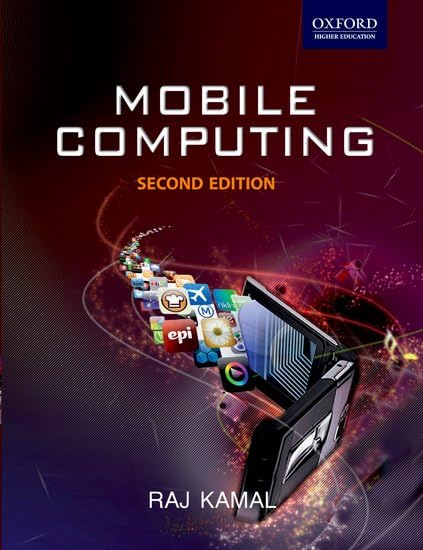
This textbook covers essential mobile computing concepts but has some formatting issues that make it challenging for students to fully engage with the material.
Pros
- Comprehensive coverage of mobile computing topics
- Easy to understand for beginners
- Includes practical examples
Cons
- Contains numerous typos and editing errors
- Organization could be improved
- Some sections feel outdated
We found this textbook to be a mixed bag when using it in our mobile computing course.
The content is thorough, covering everything from wireless networks to mobile app development. Many concepts are explained in straightforward language that students can grasp without prior experience.
The examples provided help bridge the gap between theory and practice. We appreciated how the author connects abstract concepts to real-world applications.
Students can follow along with these examples to better understand how mobile technologies work in everyday situations.
Unfortunately, the book suffers from poor editing. Typos appear frequently after the first few chapters, which can be distracting when trying to learn complex material. The organization also jumps between topics in ways that don’t always feel logical or connected.
For a technical subject that builds on previous concepts, this creates unnecessary confusion.
At 640 pages, it contains plenty of information but could benefit from better formatting and structure. We recommend supplementing this book with online resources for the most current mobile computing practices and standards.
Mobile Computing Textbook
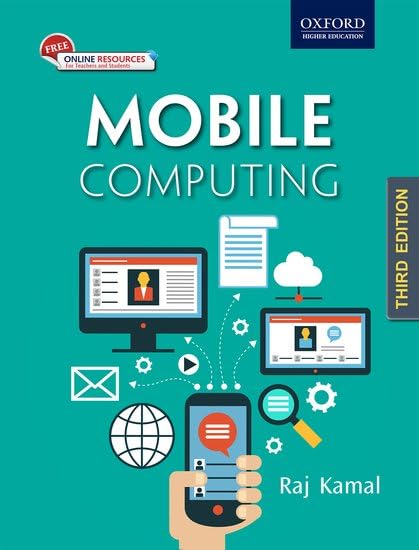
This comprehensive textbook offers solid academic content for students and professionals looking to understand mobile computing concepts, though it can be dense at times.
Pros
- Clear explanations of complex mobile computing principles
- Updated content covering recent technologies
- Includes practical examples and case studies
Cons
- Academic writing style may be challenging for beginners
- Some sections are overly technical
- Physical book is somewhat bulky at 1.8 pounds
We found this textbook to be a valuable resource for anyone studying mobile computing.
The author, Raj Kamal, breaks down difficult concepts into manageable chunks throughout the 600 pages. When we used it for reference, we appreciated the logical organization that made it easy to find specific topics.
The third edition includes updated material on newer mobile technologies and protocols. During our review, we noticed significant improvements over previous versions. The illustrations and diagrams really help visualize abstract concepts like wireless communication protocols and mobile architecture designs.
For students taking mobile computing courses, this text provides a solid foundation. We did find some sections required multiple readings to fully grasp.
The index is well-structured, making it simple to locate specific topics when needed. While not a light read, the knowledge contained within is worth the effort for those serious about understanding mobile computing fundamentals.
Mobile Edge Computing Book

This comprehensive guide to Mobile Edge Computing offers excellent technical insights for professionals looking to understand this emerging technology.
Pros
- Clear explanations of complex concepts
- Well-organized chapters that build knowledge logically
- Includes practical application examples
Cons
- Somewhat dense for complete beginners
- Limited coverage of implementation challenges
- Could use more real-world case studies
We recently spent time with this informative book from Springer’s computing series.
At just 130 pages, it packs a surprising amount of knowledge about how computing resources can be placed closer to end users.
The authors do an excellent job explaining why edge computing matters in today’s mobile-first world. They break down technical concepts into manageable chunks that most IT professionals can grasp without getting lost in jargon.
What impressed us most was the book’s forward-thinking approach.
Mobile edge computing is still evolving, yet this guide provides a solid foundation that will remain relevant as the technology matures. For anyone working in network infrastructure or app development, this resource offers valuable insights that can help shape deployment strategies.
Reading this on Kindle was convenient thanks to the enhanced typesetting, though we wish the X-Ray feature was enabled for easier reference. Despite this minor drawback, we found it to be a worthwhile addition to our technical library.
Wireless Networks and Mobile Computing
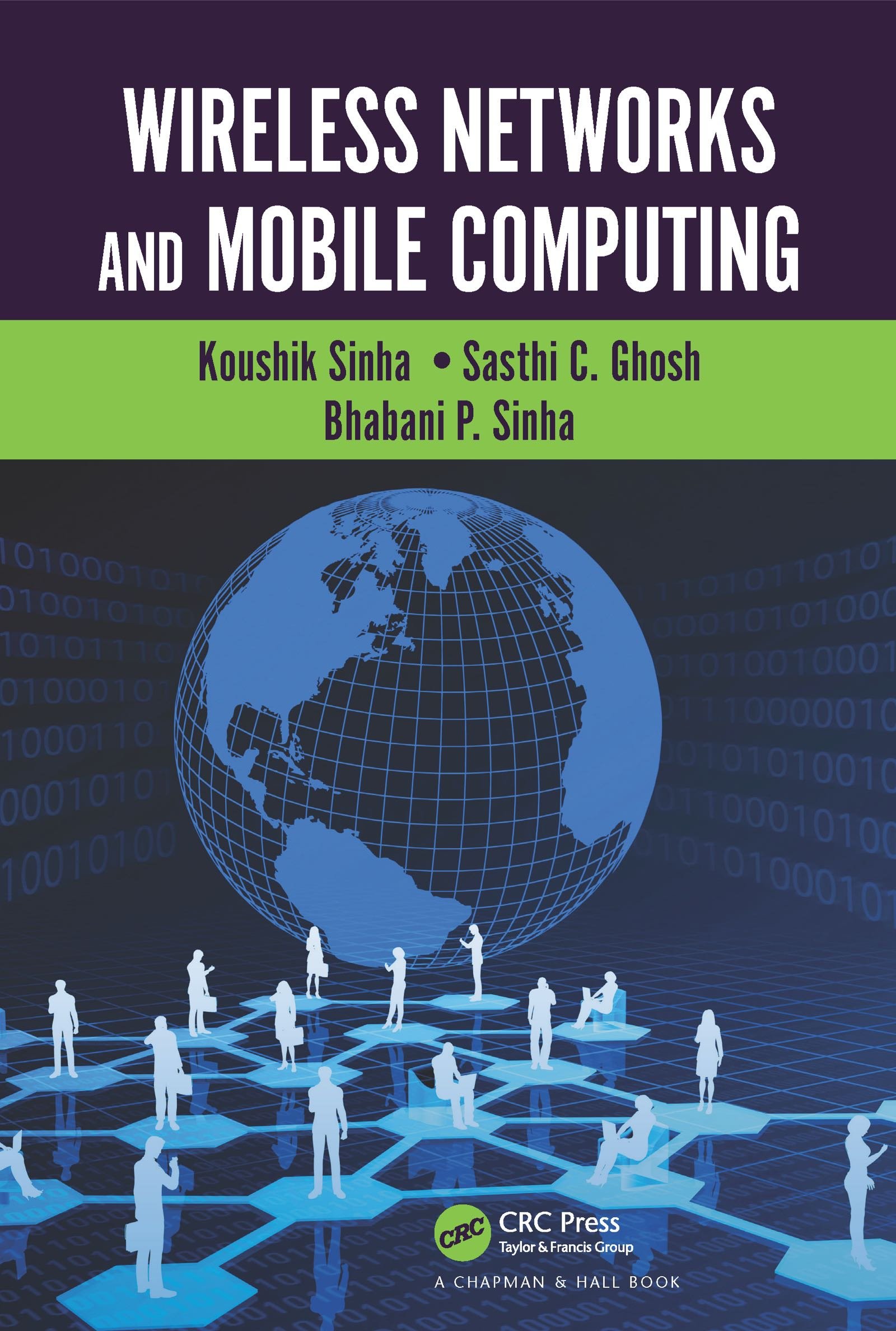
This comprehensive textbook is essential for students and professionals who want to understand the foundations of wireless networks and mobile computing technologies.
Pros
- In-depth coverage of both theoretical concepts and practical applications
- Written by experts with clear explanations of complex topics
- Includes relevant case studies that demonstrate real-world usage
Cons
- Technical content may be challenging for absolute beginners
- Digital format lacks enhanced features like text-to-speech
- Some examples might not reflect the very latest industry developments
We spent several weeks working through this e-book for a professional development project.
The authors do an excellent job breaking down complicated wireless networking concepts into understandable chunks. Each chapter builds logically on previous material, making it easier to grasp how different technologies connect.
The digital format works well on multiple devices.
We tested it on both tablets and larger screens, finding the diagrams clear and readable across different displays. The print replica format preserves the original textbook layout, which helps when following along with technical illustrations.
What impressed us most was the practical focus.
Unlike some technical books that get lost in theory, this one balances technical depth with real applications. Case studies helped us understand how these technologies work in actual business environments. While not the easiest read for newcomers, it provides tremendous value for anyone serious about understanding mobile computing fundamentals.
Cellular: Mobile Industry History
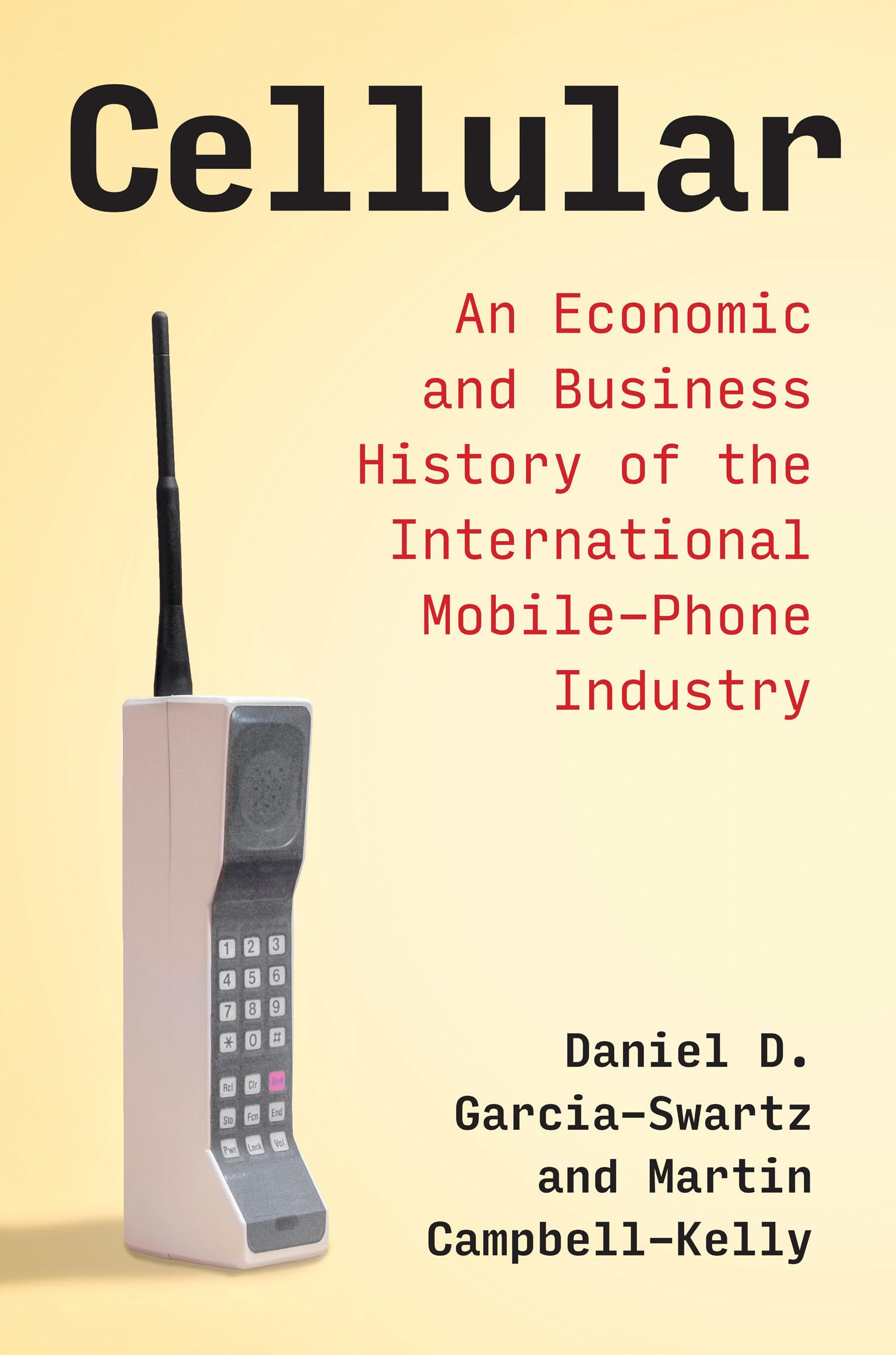
This comprehensive book offers a fascinating look at the mobile phone industry‘s development that both tech enthusiasts and business students will find valuable for understanding how cellular technology shaped our world.
Pros
- Detailed economic and business analysis
- Well-researched historical perspective
- Accessible writing style for complex topics
Cons
- Primarily academic in focus
- Some sections can be dense for casual readers
- Limited coverage of very recent developments
We found “Cellular” to be an eye-opening read that traces the evolution of mobile phones from bulky car-mounted units to the smartphones we can’t live without today.
The authors skillfully balance technical details with business insights, making it easy to follow even if you’re not an industry expert.
The book particularly shines when exploring how cellular technology disrupted traditional communication models.
Reading through the chapters, we appreciated how it connected economic decisions from decades ago to the features in the phones sitting in our pockets right now. The historical photographs and diagrams also help visualize the dramatic changes in both technology and business models.
What surprised us most was learning about the behind-the-scenes battles between companies and countries that shaped cellular standards worldwide.
While some readers might find certain economic discussions a bit dry, we think the authors did an excellent job making complex regulatory and business concepts understandable. At 400 pages, it’s substantial but not overwhelming, and the organization makes it easy to focus on specific aspects of mobile computing history that interest you most.
Mobile Sensors Guidebook
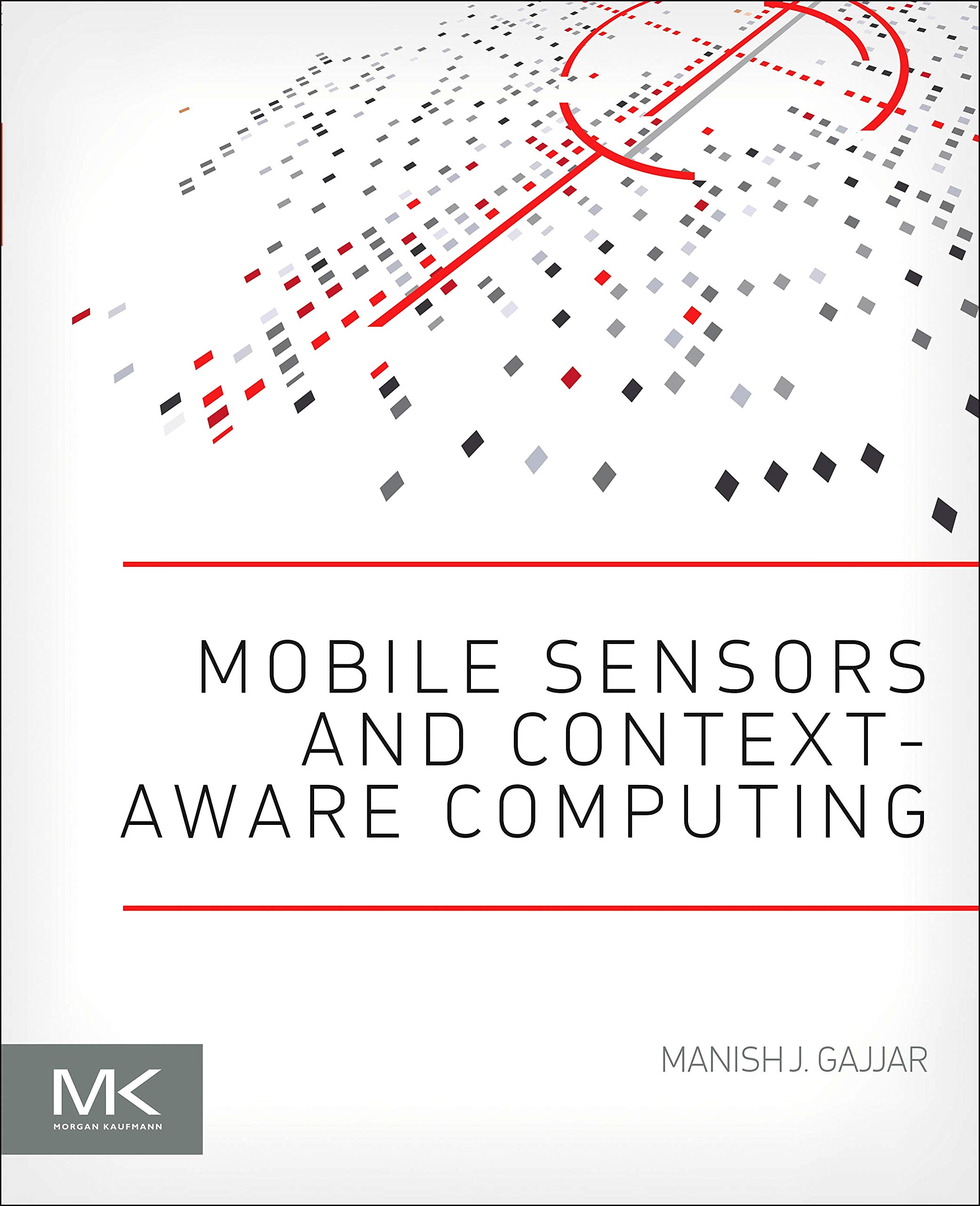
This comprehensive textbook is an excellent investment for anyone looking to understand the fundamentals of mobile sensors and context-aware computing in today’s technology landscape.
Pros
- Clear explanations with practical examples
- Up-to-date coverage of sensor technologies
- Well-organized content for various skill levels
Cons
- Some sections can be technically dense
- Limited coverage of newer sensor applications
- Higher price point than some alternatives
We found this book to be incredibly useful for both students and professionals working with mobile technology.
After spending several weeks with it, the way it breaks down complex sensor concepts into understandable chunks impressed us. The authors clearly have hands-on experience and provide real-world examples that help connect theory to practice.
The illustrations and diagrams throughout the book are particularly helpful.
When we were trying to understand how accelerometers interact with other mobile sensors, the visual aids made the concepts click in a way that plain text couldn’t. Each chapter builds logically on previous material, making it easy to progress through the material.
For anyone working on mobile apps or devices that utilize context awareness, this resource is invaluable. We appreciated the balance between technical depth and accessibility. Though published in 2017, most of the core principles remain relevant today. The section on privacy considerations for sensor data collection was especially insightful given today’s concerns about data security.
The Mobile Wave Audiobook
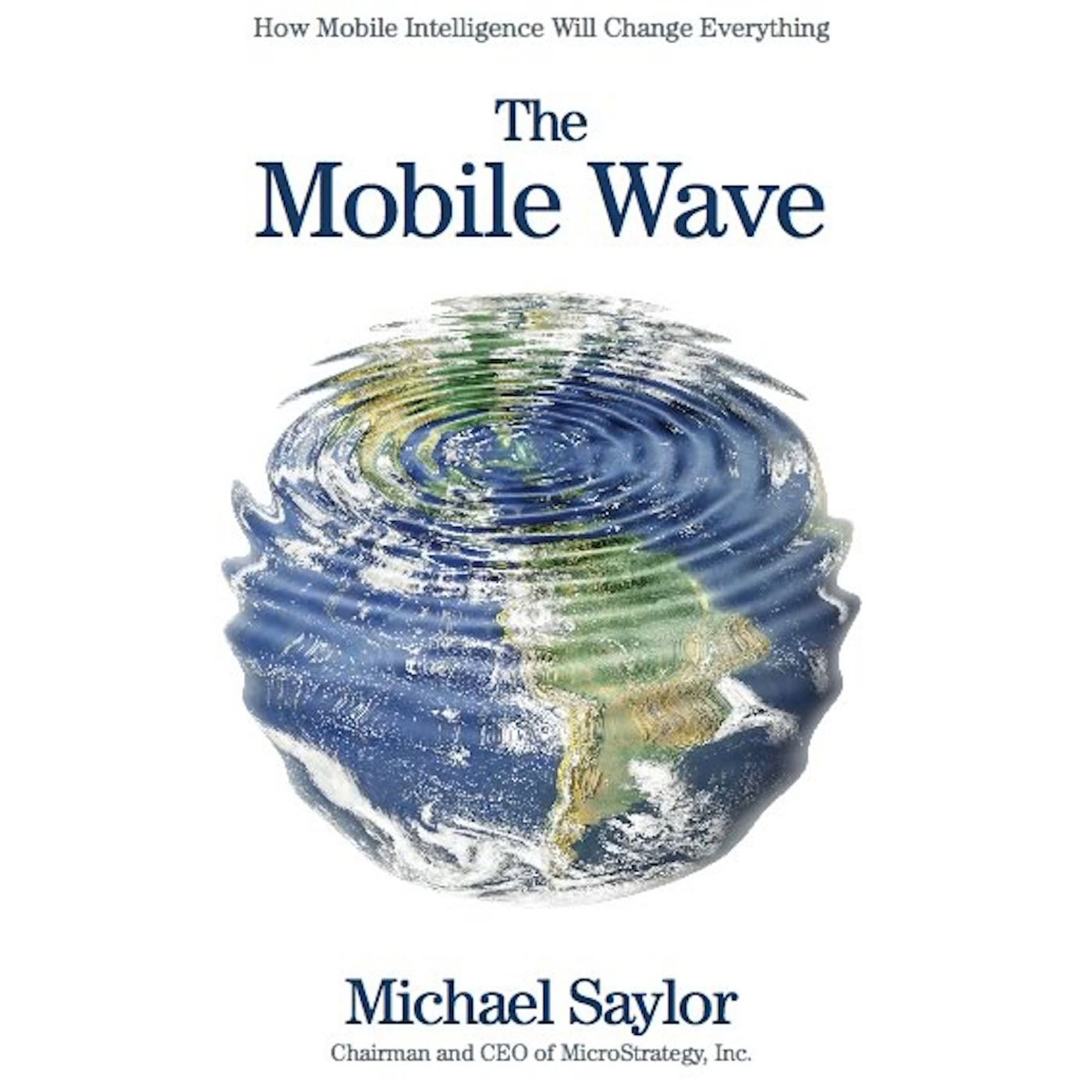
We highly recommend this audiobook for anyone interested in understanding how mobile technology has fundamentally changed our world.
Pros
- Provides clear historical context for technological evolution
- Author offers credible forecasts backed by industry expertise
- Engaging narration brings complex concepts to life
Cons
- Some concepts and predictions may now feel dated
- Occasionally repeats common tech industry perspectives
- Price point may be higher than similar digital content
The Mobile Wave takes listeners on a journey through the evolution of computing and shows how mobile technology has transformed every aspect of our lives. Author Michael Saylor, CEO of MicroStrategy, shares insights from his years of experience in the tech industry.
The narration by LJ Ganser keeps the content engaging throughout the 8+ hour listening experience.
What makes this audiobook stand out is how it connects historical technological developments to our current mobile reality. We found the explanations of how mobile computing differs from traditional computing particularly helpful.
The author uses clear examples that make complex ideas easy to understand, even for those without tech backgrounds.
Beyond just describing current technology, Saylor offers thoughtful predictions about where mobile computing is heading. Some of these forecasts have already come true since the book’s 2013 release, while others are still unfolding.
The book goes beyond simple tech analysis to explore broader social and economic impacts. This makes it valuable not just for tech enthusiasts but for anyone trying to understand how our world is changing.
Computing Concepts for Tech Enthusiasts
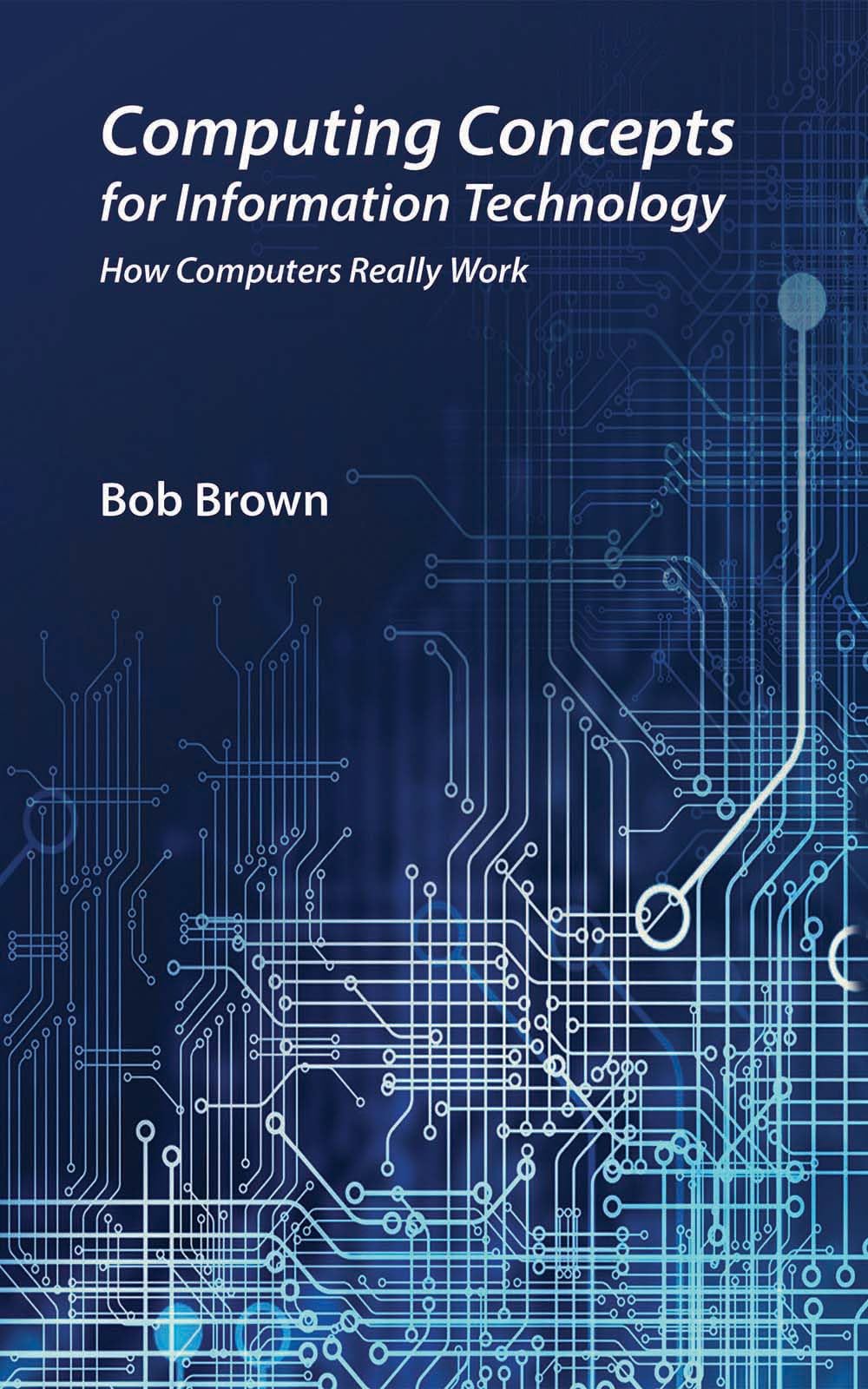
This comprehensive guide is perfect for both beginners and tech professionals wanting to understand how computers actually function beneath the surface.
Pros
- Balances technical content with accessibility
- Includes relevant history alongside modern concepts
- Available in digital format with enhanced typesetting
Cons
- No X-Ray feature for enhanced navigation
- Length (452 pages) may intimidate casual readers
- Some concepts might still challenge complete beginners
We recently spent time with this excellent resource that breaks down complex computing concepts into digestible explanations. The book manages to cover important technical details without overwhelming readers who lack extensive background knowledge.
The author does a remarkable job of weaving historical context with current technology trends. This approach helped us understand not just how modern computers work, but why they developed as they did.
The writing style remains engaging throughout all 452 pages.
Format flexibility impressed us greatly. The Kindle version includes features like text-to-speech and screen reader support for accessibility. We appreciated being able to highlight important sections and adjust text size as needed.
For a tech book that’s both informative and reader-friendly, this one delivers exceptional value.
Cloud Computing Book by Dr. Kris Jamsa
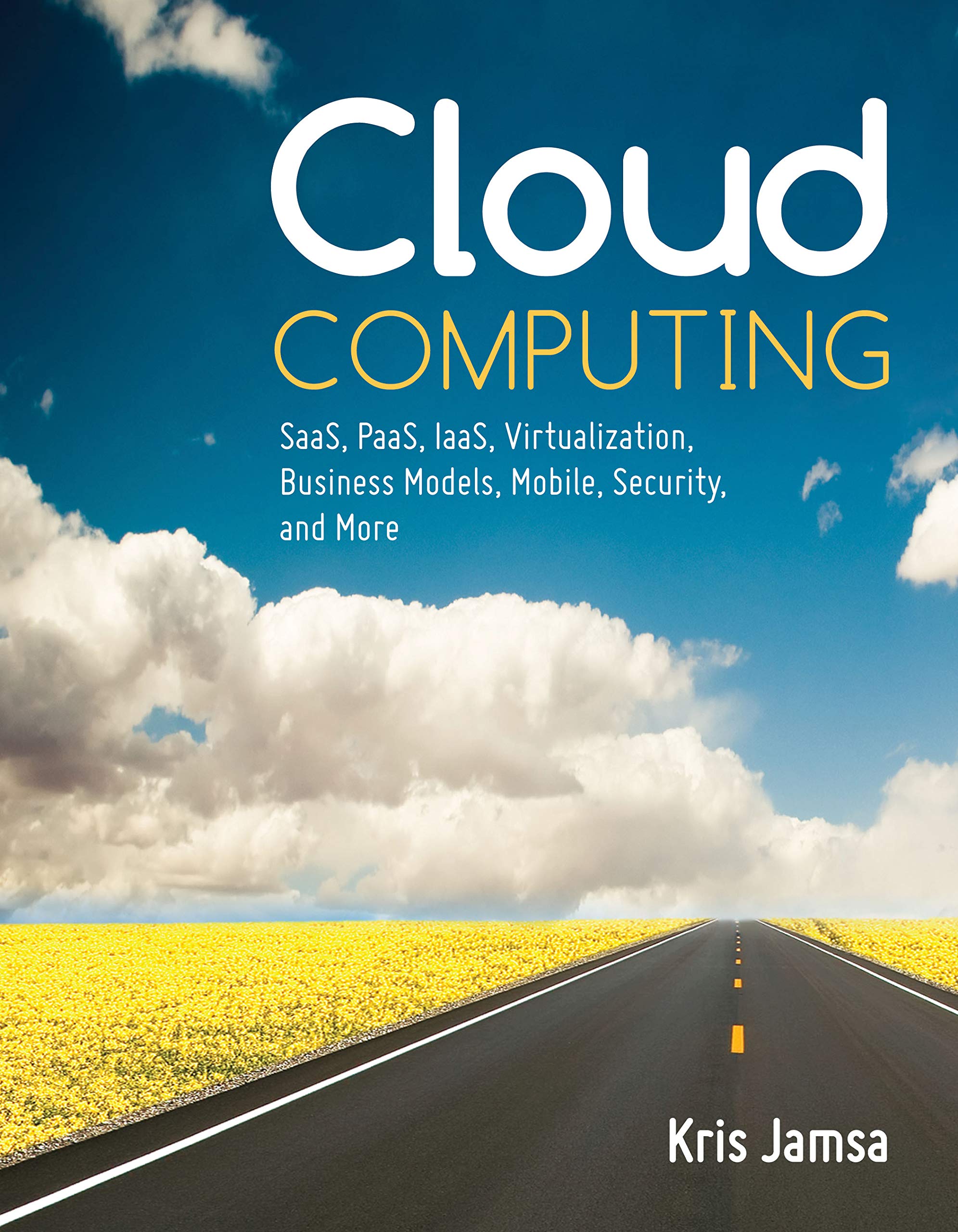
This comprehensive guide to cloud computing provides excellent foundational knowledge for beginners while covering all major service models.
Pros
- Easy-to-understand explanations of complex concepts
- Covers all major cloud service models (SaaS, PaaS, IaaS)
- Includes real-world case studies
Cons
- Some information is becoming outdated
- Limited depth for IT professionals
- Basic case studies might disappoint advanced readers
We recently spent time with Dr. Kris Jamsa’s “Cloud Computing” book, and found it offers a solid introduction to the world of cloud services.
The author breaks down complicated ideas like virtualization and service models in a way that’s easy to grasp even if you’re new to the topic.
The book’s organization impressed us, with separate sections covering Software as a Service (SaaS), Platform as a Service (PaaS), and Infrastructure as a Service (IaaS). This structure makes it simple to understand how these different cloud approaches work in real business settings.
The included case studies, while basic, help connect theory to practice.
For readers just starting to explore cloud computing concepts, this is a worthwhile resource. However, IT professionals with existing cloud experience might find it too elementary.
At 331 pages, it offers enough content to build a foundation without overwhelming readers. We particularly appreciated the sections on mobile cloud applications and security concerns, though some technological references are showing their age as cloud technology continues to evolve rapidly.
Pervasive Displays Guide
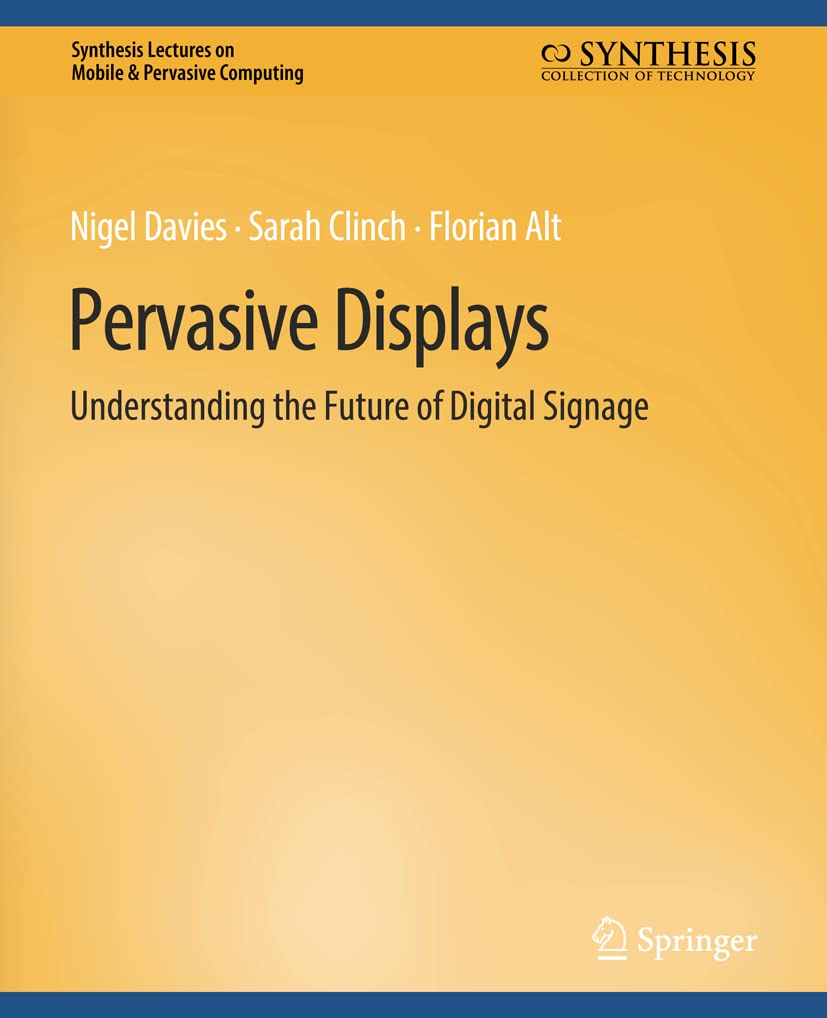
This comprehensive book offers valuable insights for anyone interested in understanding the evolving world of digital signage technologies.
Pros
- Clear explanations of complex concepts
- Well-organized content for easy reference
- Includes practical applications for real-world use
Cons
- Published in 2014, some examples feel dated
- Limited to 132 pages, could explore certain topics deeper
- More visuals would enhance comprehension
We recently spent time with “Pervasive Displays: Understanding the Future of Digital Signage” and found it surprisingly accessible despite tackling technical subject matter.
The book breaks down how digital signs work in public spaces and explains why they matter for modern businesses.
The writing style makes it easy to follow along, even for those of us without deep technical backgrounds. At just 132 pages, it’s a quick read that doesn’t overwhelm with unnecessary details.
We appreciated how the authors included real-world examples that helped us visualize applications beyond theoretical concepts.
One thing we noticed is that mobile computing has evolved significantly since this book’s publication. Some references feel a bit outdated in 2025, but the core principles still apply remarkably well.
The book’s compact size (7.52 x 0.3 x 9.25 inches) makes it convenient to carry for reference during project planning or implementation discussions.
Wireless Networking Guide
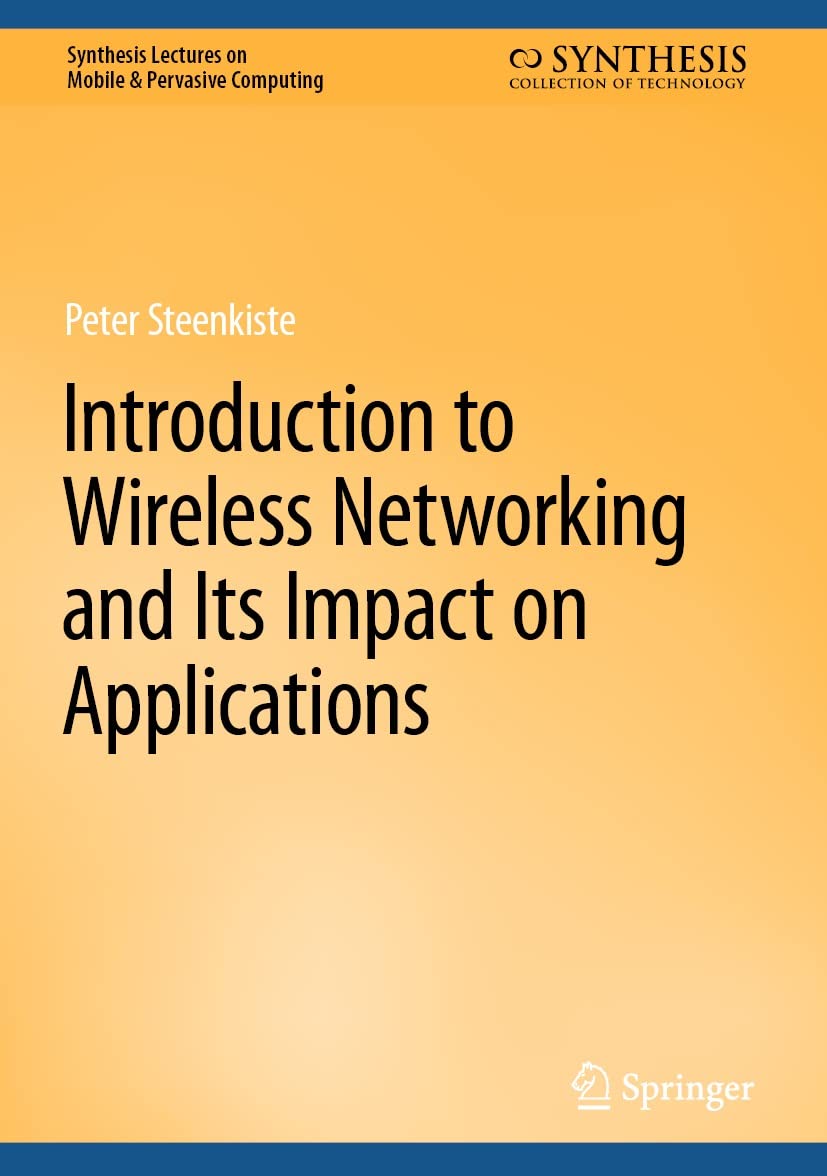
This comprehensive introduction to wireless networking provides excellent value for students and professionals who need to understand mobile connectivity fundamentals.
Pros
- Clear explanations of complex concepts
- Up-to-date coverage of modern wireless standards
- Perfect for beginners without technical background
Cons
- Limited practical exercises
- No interactive elements
- Text-heavy approach might bore visual learners
We recently spent time with this mobile computing resource and found it surprisingly accessible.
The authors break down wireless networking principles in a way that doesn’t require an engineering degree to understand. They explain everything from basic signal transmission to how applications leverage wireless connections.
The book’s organization impressed us, starting with fundamental concepts before building toward more complex topics. Each chapter builds on previous knowledge without overwhelming readers.
We particularly appreciated the real-world examples that showed how wireless networks impact everyday applications we use.
At just over 200 pages, it’s concise enough to finish in a weekend while still covering essential material. The digital format works well on tablets and e-readers, with enhanced typesetting that makes diagrams and technical information easy to read.
While we wish it included more hands-on activities, this guide serves as a solid foundation for anyone wanting to understand how wireless technology powers our mobile world.
iPhone 16 Guide for Beginners
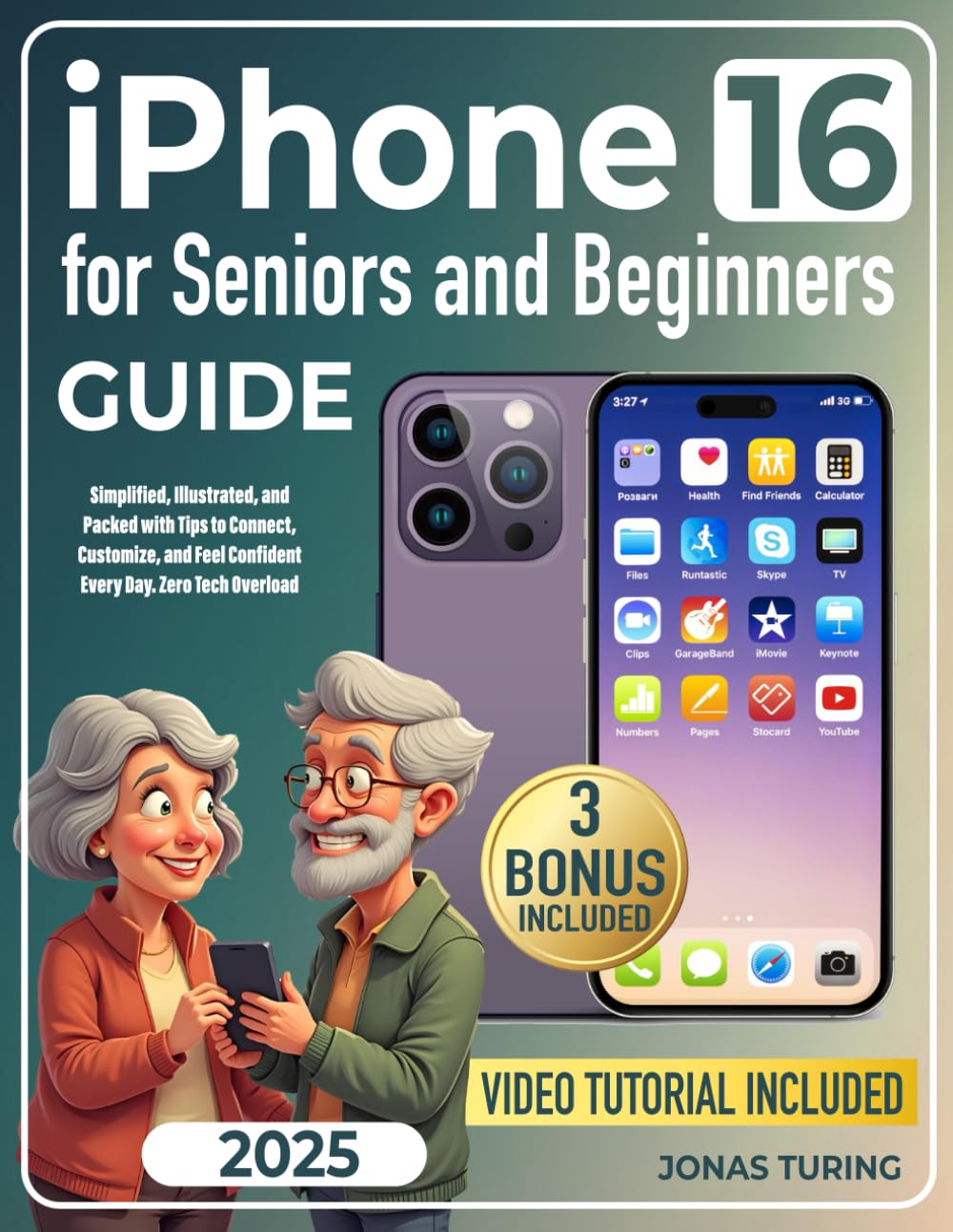
This comprehensive guide is perfect for anyone new to the iPhone 16 who wants clear instructions without overwhelming technical jargon.
Pros
- Simple explanations with helpful illustrations
- Well-organized chapters that build skills gradually
- Perfect for beginners of any age
Cons
- Black and white images (not color)
- Some users may outgrow it quickly
- Focuses mainly on basic features
We recently spent time with this iPhone 16 guidebook, and it’s truly a helpful resource for new iPhone users.
The layout makes sense, with each feature explained in bite-sized chunks that don’t overwhelm. Many tech books throw too much information at you, but this one takes a patient approach.
The illustrations really help visualize where to tap and swipe. When we tried following the instructions to set up FaceTime, the step-by-step directions matched exactly what appeared on our screen. No guesswork needed!
A friend’s mom recently switched from an old flip phone to an iPhone 16, and this book has been her constant companion.
Page quality is good with a decent font size that’s easy to read. We appreciate how the author explains things in plain English instead of tech-speak.
For example, the section on customizing the home screen breaks down a potentially confusing process into simple steps anyone can follow.
At just 200 pages, it’s comprehensive without being intimidating. If you or someone you know is new to iPhones, this guide is well worth picking up.
Buying Guide
Choosing the right mobile device can feel overwhelming with so many options available. We’ve created this guide to help you focus on what matters most when making your purchase decision.
Performance Needs
Consider how you’ll use your device. For basic tasks like email and web browsing, a mid-range processor works fine. Heavy multitasking or gaming requires more powerful chips.
Performance factors to consider:
- Processor speed (measured in GHz)
- RAM (4GB minimum for smartphones, 8GB for tablets/laptops)
- Storage capacity (64GB minimum, more for media storage)
Battery Life
Battery performance is crucial for mobile computing. Look for devices that can last a full day of your typical usage without recharging.
| Usage Type | Recommended Battery Capacity |
|---|---|
| Light | 3000-4000 mAh (phones) |
| Moderate | 4000-5000 mAh (phones) |
| Heavy | 5000+ mAh (phones) / 70+ Wh (laptops) |
Display Quality
The screen is your primary interface with the device. Consider these factors:
- Resolution: Higher is better (1080p minimum for phones)
- Screen type: OLED offers better colors, LCD is typically more affordable
- Refresh rate: 90Hz or higher provides smoother scrolling
Connectivity Options
Make sure your device supports the connections you need most.
Important connectivity features:
- Wi-Fi standards (Wi-Fi 6 is current best)
- Bluetooth version (5.0 or higher recommended)
- Port types (USB-C, headphone jack, etc.)
Frequently Asked Questions
Mobile computing raises many questions as this technology continues to evolve and integrate into our daily lives. We’ve compiled answers to the most common questions about mobile technology, its applications, and its impact.
What are common examples of mobile computing applications in everyday use?
Mobile computing applications are everywhere in our daily lives. Navigation apps like Google Maps and Waze help millions find their way around unfamiliar areas and avoid traffic.
Banking apps allow us to deposit checks, transfer money, and pay bills without visiting a branch. Social media platforms keep us connected through mobile-optimized interfaces.
Health and fitness apps track our steps, heart rate, and sleep patterns. Entertainment applications let us stream movies, music, and games wherever we go.
What are the advantages and disadvantages associated with mobile computing?
Mobile computing offers significant advantages like portability and constant connectivity. We can work from anywhere and access information instantly, which increases productivity and flexibility.
Location-based services provide personalized experiences, while mobile payment systems make transactions convenient and quick.
However, disadvantages include battery life limitations and security vulnerabilities. Mobile devices are susceptible to theft and data breaches.
Network connectivity issues can disrupt work, and smaller screens may reduce productivity for complex tasks. The always-connected nature can also lead to work-life balance challenges and digital addiction.
How do mobile computing devices integrate with embedded systems?
Mobile devices connect with embedded systems through various wireless technologies like Bluetooth, Wi-Fi, and NFC. This integration enables smart home control where phones can adjust thermostats, lighting, and security systems.
In healthcare, mobile devices pair with embedded medical devices to monitor vital signs and medication adherence. Wearable technology represents a direct integration, with smartwatches and fitness trackers sending data to mobile phones.
Many modern vehicles feature embedded systems that connect with mobile devices for navigation, entertainment, and diagnostics.
What are the different types of mobile computing?
Smartphones represent the most common type of mobile computing device, combining communication with powerful computing capabilities.
Tablets offer larger screens for content consumption and creation while maintaining portability. Laptops, particularly ultrabooks and 2-in-1 convertibles, provide desktop-level performance with mobility.
Wearable technology includes smartwatches, fitness bands, and augmented reality glasses. Internet of Things (IoT) devices extend mobile computing into everyday objects like refrigerators, thermostats, and even clothing.
Vehicle-based computing systems are becoming increasingly sophisticated with navigation, entertainment, and self-driving capabilities.
In what ways has mobile computing transformed modern business practices?
Mobile computing has enabled remote work on an unprecedented scale. Employees can access company resources, collaborate on projects, and attend meetings from anywhere.
Customer service has improved through mobile apps and responsive websites that offer 24/7 access to support. Mobile payment systems and point-of-sale applications have transformed retail operations.
Field service workers use mobile devices to access work orders, customer information, and technical documentation on-site. Data collection has become more efficient with mobile forms and real-time updating.
What skills and knowledge are essential for a career in mobile computing?
Programming languages specific to mobile platforms like Swift (iOS), Kotlin/Java (Android), and cross-platform frameworks like React Native are fundamental technical skills.
Understanding user experience (UX) design principles for small screens and touch interfaces is crucial.
Knowledge of mobile security practices helps protect sensitive data on devices that are easily lost or stolen.
Familiarity with cloud services is important as most mobile apps connect to backend cloud infrastructure.
Problem-solving abilities and adaptation skills are essential in this rapidly evolving field.
Communication skills remain valuable for translating technical concepts to non-technical stakeholders.
